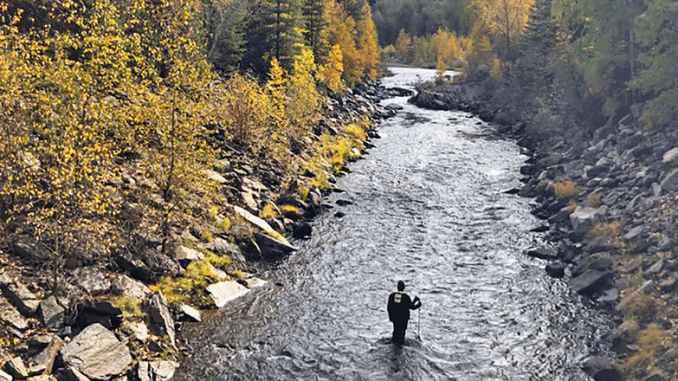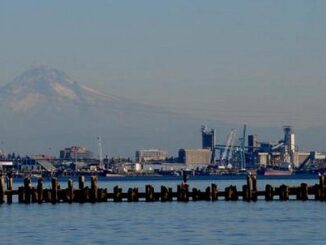
KELLOGG, Idaho, October 22, 2021 (ENS) – In an effort to reduce the volume of heavy metals discharged to Idaho’s Coeur D’Alene River from the Bunker Hill Mine and Smelting Complex, once the largest smelting facility in the world, the State of Idaho has taken possession of the newly upgraded Central Treatment Plant in Kellogg.
Production at the Bunker Hill Mine began in 1885 and ran for over 95 years. Before it closed in 1991, it was a lead metal mine with silver and zinc produced as by-products.
In the early days, inefficient mining meant that as much as 75 percent of the mine tailings were dumped directly into the Coeur d’Aléne River and its tributaries, which became polluted with high levels of sulfur dioxide, lead, and other metals.
The water in the river turned opaque gray, earning the stream the nickname “Lead Creek,” and endangering residents, including the Coeur d’Alene Tribe, which had traditionally depended on fish from the waterway.
In 1983 the U.S. Environmental Protection Agency added this area to the National Priorities List as a Superfund site for investigation and cleanup.
In 1991 the Coeur d’Alene Tribe filed suit against the mining companies for damages and cleanup costs; they were joined by the federal government in 1996 and the state of Idaho in 2011. Settlement was reached with the two major defendants in 2008 and 2011, with an agreement for funding of $263.4 million plus interest for cleanup and HABITAT restoration.
The recently completed $50 million Central Treatment Plant project was undertaken by the U.S. Army Corps of Engineers and their contractor, Wood Environmental and Infrastructure Services, with oversight by the U.S. Environmental Protection Agency.
Beginning in 2017, U.S. Army Corps officials supervised demolition of parts of the old plant while launching an upgrade to the remaining parts of the aging facility.
Dan McCracken, Idaho Department of Environmental Quality regional administrator in Coeur d’Alene, said, “There has been a tremendous amount of hard work to get to this point. The number of people involved in successfully completing a project of this magnitude is truly impressive. I’m especially proud of the work done by our staff at DEQ to have the State of Idaho well-prepared to take on this responsibility.”
Senior Project Engineer for the Army Corps, Rod Zion, said, “The project is a large investment of cleanup work in the Coeur d’Alene River Basin, and it’s been an honor to help improve the environment and the lives of people living here.”
Calvin Terada, director of EPA’s Superfund Cleanup office in Seattle, said, “This is a day to celebrate.”
“The rebuilt plant benefits the local community in two important ways,” Terada explained. “First, by providing much better treatment of acid mine drainage from the Bunker Hill Mine. And second, by using a state-of-the-art system to intercept, collect, and treat the area’s contaminated groundwater before it enters the South Fork of the Coeur d’Alene River.”
The new treatment plant removes zinc and other metal compounds by chemically precipitating them in a sludge that will be disposed in an engineered impoundment area expected to last at least 30 years.
Prior to the upgrades, the plant’s water treatment capacity was approximately 2,500 gallons per minute. The upgraded facility will be able to treat up to 8,000 gpm and is designed to accommodate future expansion to 10,000 gpm.
McCracken said, “Our new plant should significantly improve water quality in the South Fork. We’re ready to take the baton now and do our part to operate the facility and improve river conditions.”
Featured image: U.S. Geological Survey hydrologic technician Mike Michelotti measures streamflow on the South Fork Coeur d’Alene River at Elizabeth Park near Kellogg, Idaho, October 9, 2019. (Photo courtesy USGS)
© 2021, Environment News Service. All rights reserved. Content may be quoted only with proper attribution and a direct link to the original article. Full reproduction is prohibited.



